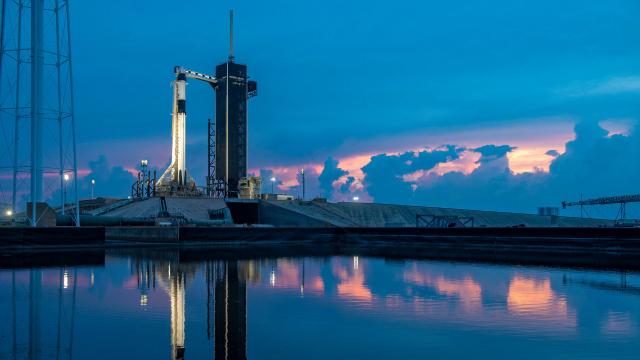NASA announced that it was delaying the launch of its SpaceX Crew-1 mission to the International Space Station until early to mid-November because of issues with the spaceflight company’s Falcon 9 rocket. The launch was originally scheduled for Oct. 31 at NASA’s Kennedy Space Centre in Florida.
In a statement posted Saturday, the agency said that there had been “off-nominal behaviour” of the Falcon 9 first stage engine gas generators during a recent non-NASA mission launch attempt. NASA stated that the additional time would allow SpaceX to complete hardware testing and data reviews.
It also highlighted the fact that it had full insight into SpaceX’s launch and testing data as part of its Commercial Crew and Launch Services Programs partnership, an important detail considering that the issue occurred during a non-NASA launch.
Kathy Lueders, associate administrator of NASA’s Human Exploration and Operations Mission Directorate, said the partnership helped the agency make informed decisions about its missions.
“We have a strong working relationship with our SpaceX partner,” Lueders said. “With the high cadence of missions SpaceX performs, it really gives us incredible insight into this commercial system and helps us make informed decisions about the status of our missions. The teams are actively working this finding on the engines, and we should be a lot smarter within the coming week.”
SpaceX carried out the first astronaut trip to orbit by a private company earlier this year when it took NASA astronauts Bob Behnken and Doug Hurley to the ISS and back.
The Crew-1 mission isn’t the only NASA mission SpaceX has on the horizon with the Falcon 9 rocket. The spaceflight company is also set to launch NASA’s Sentinel-6 Michael Freilich ocean-monitoring satellite on Nov. 10 as well as the SpaceX CRS-21, or a cargo resupply mission, in late November or early December.
“NASA and SpaceX will use the data from the company’s hardware testing and reviews to ensure these critical missions are carried out with the highest level of safety,” the agency said in its statement.
The Crew-1 mission will take NASA astronauts Michael Hopkins, Victor Glover and Shannon Walker, as well Japan Aerospace Exploration Agency astronaut Soichi Noguchi to the ISS. The astronauts will travel there on SpaceX’s Crew Dragon spacecraft, which they have named Resilience in honour of the dedication of the teams working on the mission.
The Crew Dragon will remain docked to the ISS for the full length of the astronauts’ stay, which NASA states will last approximately six months. Once the mission is completed, the Crew Dragon will undock from the space station with the four astronauts on board and return to Earth.
